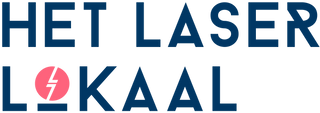Design flat engravings smartly

How can you best design flat engravings?
Flat engravings are generally the most expensive processes because applying a flat engraving is a time-consuming process. Therefore, it is worthwhile to optimize your drawing for both the best and cheapest result. In this article, we explain how to best arrange designs to keep costs as low as possible.
How are the costs for flat engraving calculated?
Flat engravings are a completely different process than cutting or engraving lines, and they are executed and calculated differently (read more here about how the costs are calculated). If your drawing contains flat engravings, the laser head starts at the bottom of the drawing and "scans" at high speed from left to right over the material, taking a step of less than a tenth of a millimeter on the Y-axis with each back-and-forth movement.
However, the machine does not process each "piece" of flat engraving in the drawing separately, but performs all flat engravings simultaneously (combined). The minimum position on the X-axis and the maximum position on the X-axis (per step on the Y-axis) determine the total engraving time. In the video below, it is clearly visible that during the engraving of the chessboard, parts are skipped but are still part of the machine time.

Depending on how the flat engravings are arranged, a large part of the flat engraving may only involve the movement of the laser head. This also means that if the drawing is rearranged, it can affect the price. In the example below, there are 2 identical drawings vertically and horizontally and the corresponding processing times. The movement of the machine without processing (transversal moves) is shaded in red.

Few red areas (movement).Machine time 18 minutes.

Many red areas (displacement). Machine time 26 minutes.
The trick to designing flat engravings as efficiently as possible is to minimize the transversal moves (movements without processing). Every flat engraving will always contain a certain amount of transversal moves, as you can see in the example above, the laser head overshoots the engraving on the left and right. These movements are necessary to decelerate and accelerate the laser head without affecting the result.
How should I arrange flat engravings?
- Flat engravings should be arranged in such a way that no large "bridges" of displacement occur. In the example below, machine time is saved by rearranging the design to have as little displacement as possible.The exact length of bridging that is too long depends on the design, but we usually recommend a maximum of 10cm.

Machine time 11 minutes.

Machine time 9 minutes.

Machine time 6 minutes.
- Consider whether it is more convenient to arrange as many parts as possible on a sheet or to order the parts individually. If your drawing is large and only contains a small area engraving, it may be more cost-effective (especially with inexpensive materials) to order the design individually rather than arranged on a sheet. This prevents large bridging.
- Can't avoid a large space between two shapes that are getting an area engraving? In that case, you can give the areas different colors. In our online portal, both colors can be indicated as area engraving, but these groups are read separately and thus calculated separately. Essentially, you are splitting the two area engravings!




